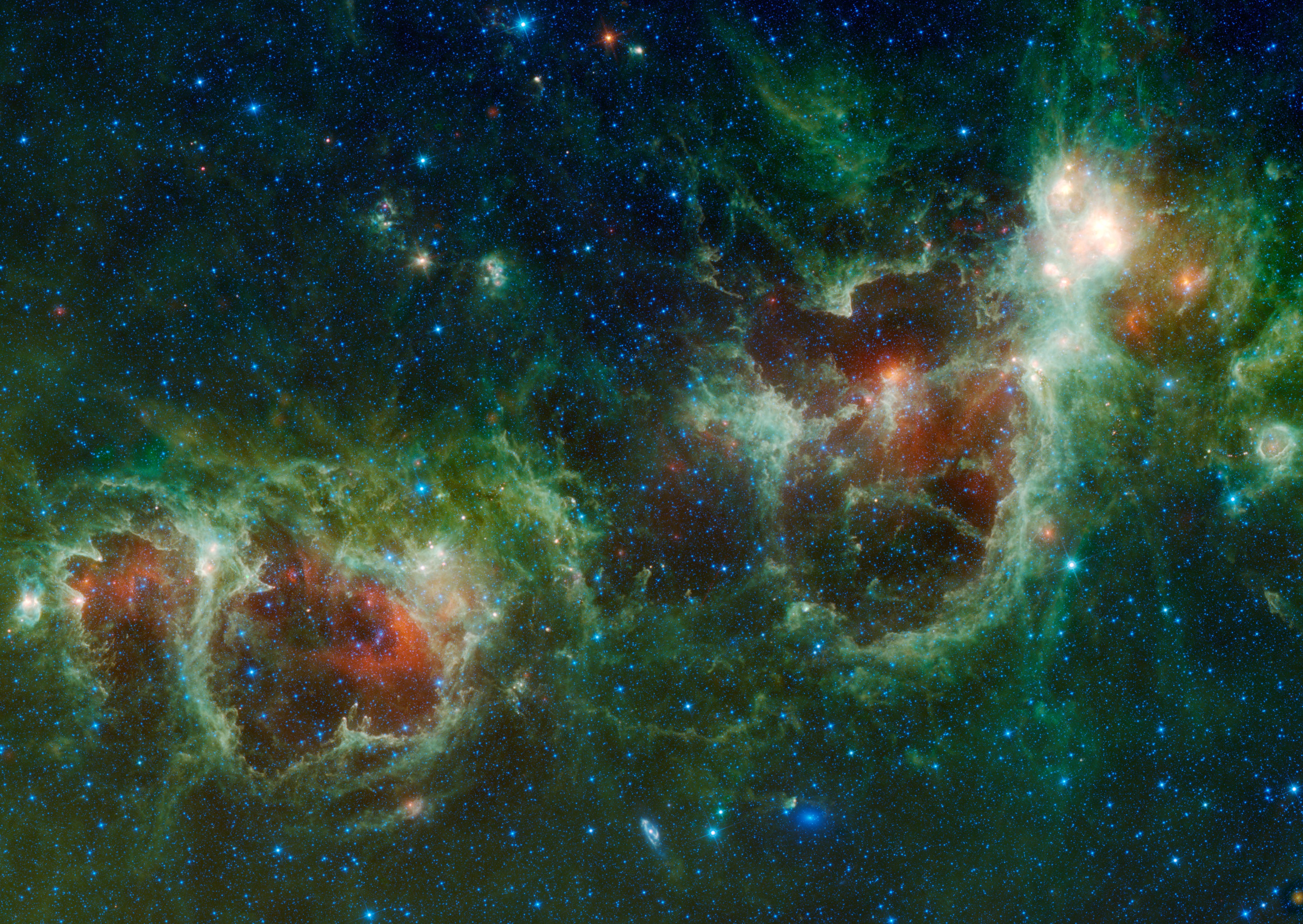
WISE Sees the Heart and Soul Nebulae
NASA's Wide-field Infrared Survey Explorer (WISE) mission captured this mosaic of the Heart and Soul nebulae. Located about 6,000 light-years from Earth, the nebulae form a vast star-forming complex that makes up part of the Perseus spiral arm of our Milky Way galaxy. The nebula to the right is the Heart, named after its resemblance to a human heart. To the left is the Soul nebula, also known as the Embryo nebula. WISE's infrared vision allows it to see into the cooler and dustier crevices of clouds like these, where gas and dust are just beginning to collect into new stars. These stars are less than a few million of years old – youngsters in comparison to our Sun, which is nearly 5 billion years old. Also visible near the bottom of this image are two galaxies, Maffei 1 and Maffei 2. Both galaxies contain billions of stars and, at about 10 million light-years away, are well outside our Milky Way yet relatively close compared to most galaxies. Maffei 1 is the bluish elliptical object and Maffei 2 is the spiral galaxy.
